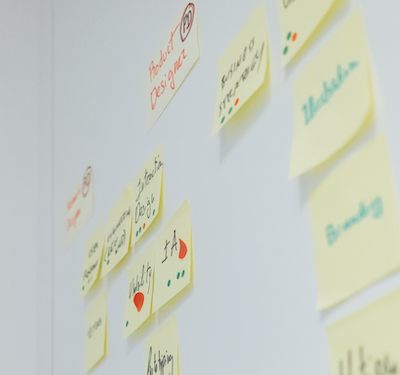Do Standups Story-By-Story not Person-By-Person

Story-focused (or story-by-story) standups work like this: every morning, the host walks us through each in-progress story on the board from right to left (closest to release first), with assignees giving a brief update. We take turns hosting the meeting.
In contrast, a person-focused standup, also known as person-by-person or Three Questions 1, has each team member answering three questions: "What did you work on today?", "What did you work on yesterday?" and "Are there any blockers?". The host selects who speaks next or creates a system for it.
I think story-focused daily standups are almost always better, having tried both at times throughout my career, for three key reasons.
Story-focused reminds us every day of what we're trying to achieve
The goal of a standup is to review the work in progress. Our story-focused status updates give us our best chance to adjust if it looks like our commitments are in danger. A daily review also means that if we change course mid-sprint, everyone knows what direction we're now heading in.
On the other hand, a person-focused standup might have you believe the goal is to review the details of each other's work days or even for each of us to justify our existence. The person-focused updates can sometimes take the whole allotted standup time, at worse, causing us to get no ongoing feedback on our sprint commitments until our next Retro.
Story-focused standups are more collaborative.
Product development is a team sport. We all have different skills, and collectively, we seek to build something more significant than one of us could alone.
Giving our updates in the context of our overall plan gives us a better chance of collaboration.
Maybe a designer learns how difficult a particular detail is to implement and can propose a simpler alternative. Perhaps another developer knows an expert in an area of struggle from another team who can help.
In comparison, in a person-by-person standup, lacking the context of each other's updates, we may find ourselves tuning out some of the ones where updates aren't clear to us how they fit into our overall goals.
Story-focused standups are fun and less stressful
Since we're focusing on what we're collecting and achieving, not interrogating the details of each person's work days, we can relax and be more engaged and present. The overall work we are trying to accomplish is much more interesting than the minutiae of each other's work days.
A meeting where everyone is engaged and present is much more fun.
The day's first meeting should not sap the team's energy.
In either case, we aim to finish standup in 15 minutes or less. The host politely tries to wrap up long-winded status updates and organizes follow-up discussions.
The downside to story-focused standups is that some individuals who are less comfortable contributing to the group may not get a chance to speak. Maybe they are working on something we aren't covering on our board, or perhaps we haven't assigned them anything, and they're not sure when to ask.
To combat this, we end standups by giving the floor to anyone who hasn't yet contributed. It allows us to write tickets for their work or to ensure tasks are assigned.
It's vital to remember why we do daily standups: we do them because the coordination effort is complex enough to require daily alignment. If it isn't sufficiently complex - i.e., if it's a small team - you may not need standup.
Cover by Paul Hanaoka on Unsplash